Feeling the trees shivering: endangered environmental knowledge in northern Kyoto
For more than 400 years, villagers in the northern mountains of the Yamashiro basin (an area now incorporated into the modern administrative system of Kyoto city) have developed a special relationship with trees—in particular, with one specific type of tree, the cedar oCryptomeria japonica, called sugi in Japanese. Cultivated all over Japan, cedar is a staple in Japanese architecture, used mainly in the interior of buildings, because it grows straight and is easy to work with.
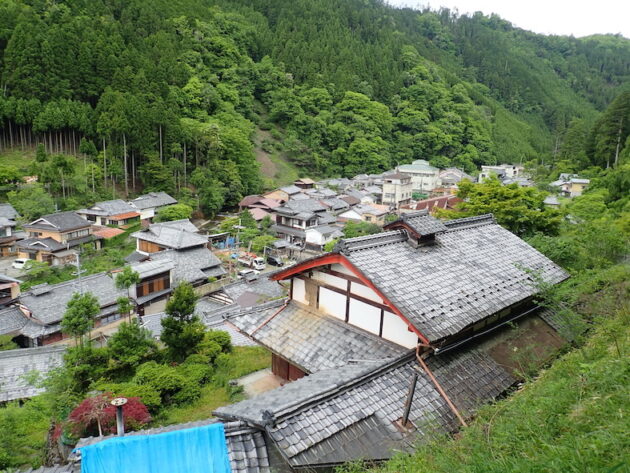
Cedar plantations are concentrated to the north of Kyoto city, in Kitayama, the northern mountains. The area includes several formerly independent villages, such as Takagamine, Takao, and Kumogahata. Among them, Nakagawa remains the center of a traditional silviculture that developed through deep understanding of the local environmental characteristics and of the trees themselves. This local knowledge together with the development of specialized techniques allowed villagers to produce a range of special Kitayama sugi wood products, including the valuable pale-colored Maruta log, a long and straight knot-free section of tree-trunk. In the past these used to be highly appreciated by both nobility and the bourgeoisie as the non-structural corner posts of ornamental alcoves (tokonoma 床の間) in tatami reception rooms of Sukiya style architecture, mostly residences and tea pavilions. In fact, from only one variety of seed, a trunk can have about 50 different kinds of phenotypes, each resulting in different wood products within a varied price range. The features of the wood products in this area are unique, and are the result of a combination of fine environmental knowledge, intensive human labor and geographic conditions.
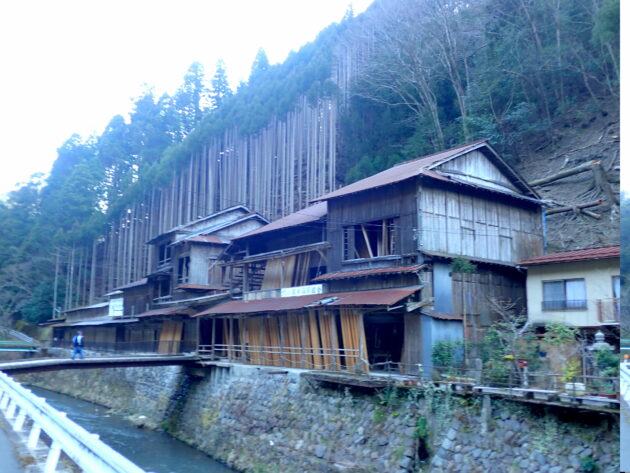
This combination of human hearts, energy, and environmental features shaped readily recognizable landscapes. Although the area has a long history, and was formerly well-known among a specialized public in Japan, the hamlet of Nakagawa became nationally and internationally famous after having been featured in Kawabata Yasunari’s novel Koto (The Old Capital). It was published in 1962, and adapted three times for film and television (in 1963, 1980, and 2005). The chapter on “the Kitayama cryptomeria” describes the location of this village: “The steep mountains on either side of the Kiyotaki River dropped into the narrow valley. One reason the famous cedar logs were raised here was that the area received ample rain and little sunshine. It was also protected from the wind.” In this novel, among the most well-known written records about Kitayama sugi, Kawabata compares the rectitude of this tree’s trunk to the rectitude of one’s mind and heart. As stated by Chieko, the heroine in the novel: “The cedars all stand there straight and beautiful. I wish human heart grew like that.” The intensive human labor needed to maintain this densely cultivated forest on steep mountains is what allows the tree trunks to maintain the beauty described in this novel. When Kawabata describes the features of this landscape, he is in fact describing the way of living, the ethics and feelings of the people who maintain that landscape.
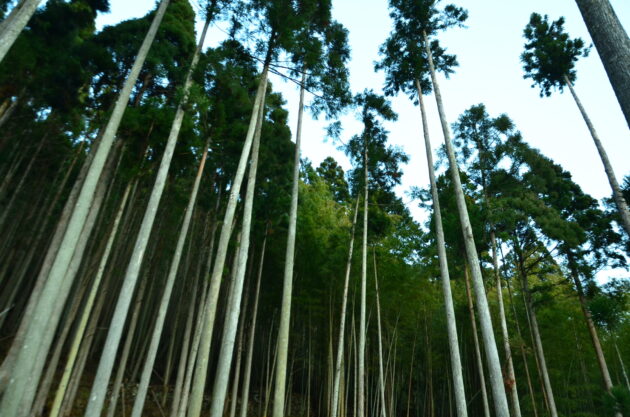
Nowadays, because of lifestyle changes and the spread use of cheaper wood products, including imported cedars, the commercial value of Kitayama sugi products have decreased.
The production of Kitayama sugi is deeply linked to the maintenance of these landscapes and the village, and the lack of interest for this product has a comprehensive impact to the area. Moreover, the rich environmental knowledge nurtured after the accumulated experience of several generations is endangered.

Among the few villagers born and raised in Nakagawa, Nakata Osamu is the head of the company Nakagen, one of the rare companies that still processes logs according to traditional methods. Mr. Nakata represents the fourth generation of a collateral branch (bunke) that was formed from a main household family (honke) of about more than ten generations. His great-grandfather received land and was allowed to exploit the mountain from 1889. Since his birth, he has been closely connected to the cultivation of cedars and the foresters’ activities in the area. He remembers that when he was about 12 years, whenever there was a snowy Sunday, his father would wake him up at 7am. Then, they would go to the mountains and remove snow from trees.
In order to release the weight of the snow from the tree crowns it was necessary to shake down the snow, an action which required a lot of bodily effort, ramming shoulders into the trunks. During the winter, in the mountains of Nakagawa, sunlight only hits the forest between 11am to 1:30pm. Within this short period, the snow melts slightly, making it the most appropriate time to shake down the snow. However, snow falling from the top of a crown could injure the person shaking the tree.
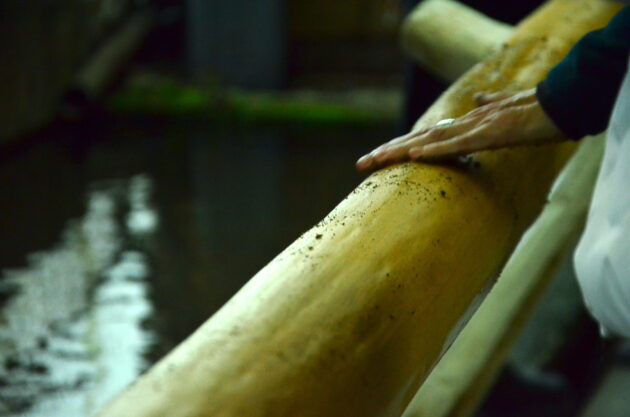
After the trees are felled, Mr. Nakata is able to identify, through observing the annual growth rings, times when the snow accumulated on the trees’ crowns. He is able to perceive the pain of a tree engraved in variations of its growth rings whenever the foresters were unable to remove snow, knows well when a tree has a suitable environment in terms of water, sun, and soil quality, and recognizes how recently increasing rains have badly affected the trees, with typhoons becoming more frequent, damaging and toppling trees. This is something that he can feel whenever he walks in the mountains, which he has done since he was a child. In the past, whenever he saw the suffering of a tree he would make efforts to help it, but nowadays he hesitates. As this specialized knowledge is dying out and is no longer applied, with hardly any interest among younger generations, Kitayama’s sugi trees will continue to shiver.
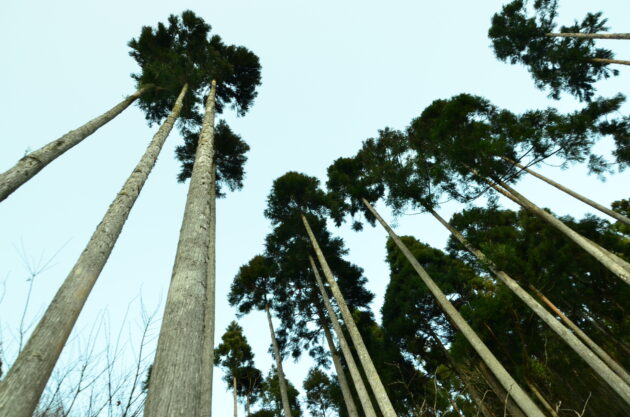

Andrea Flores Urushima was born in Brazil. She studied Architecture and Urban Planning at the University of Sao Paulo, and worked in an architectural and planning office before completing her doctorate at the Graduate School of Human Environmental Studies, Kyoto University, Department of Cultural and Regional Environmental Studies. Her research interests include “the formation process of cities and villages” and “the spatial transformation of human living environments.”
Photos by Ricardo Pereira Araujo and Andrea Flores Urushima


